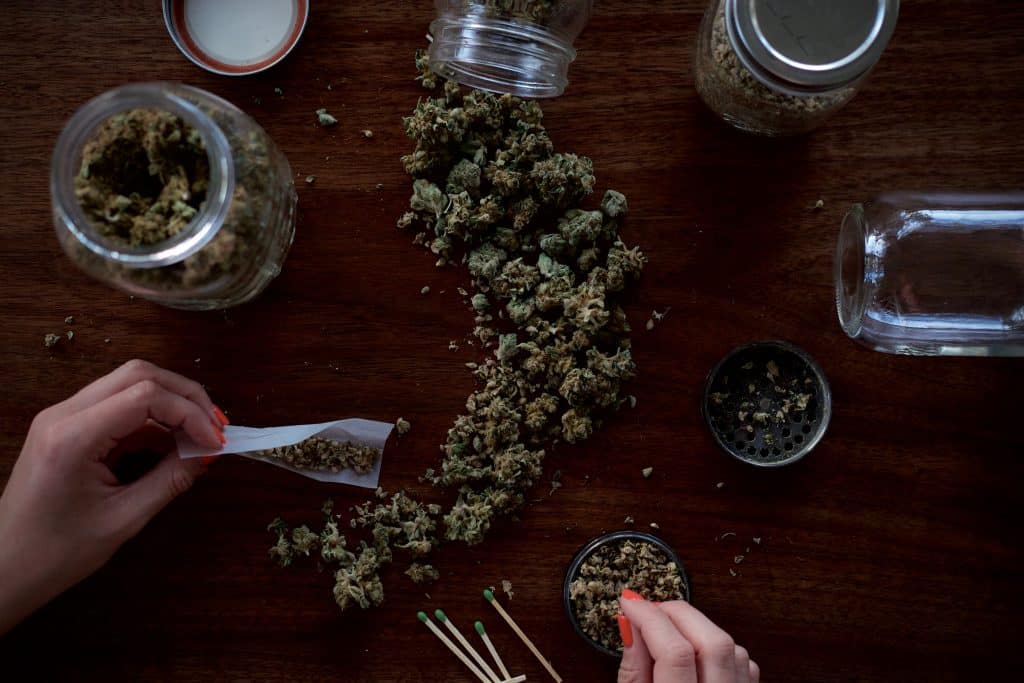Although marijuana is one of the most widely used substances in the US, many people wonder if it has a marijuana addictive quality. Yes, it is the correct response. However, not everyone who consumes the chemical will develop an addiction.
The majority of marijuana users do not develop a marijuana addiction. They retain control over how they use it; they typically decide how much to use and when to use it. They obtain precisely the outcomes they want and plan when they use marijuana.
Is Weed Addictive?
Although the majority of weed users don’t become addicted, this doesn’t mean it never happens. Some marijuana users will display many of the traits that are frequently linked to addiction.
Chronic cannabis usage can cause a condition known as cannabis use disorder, sometimes known as marijuana use disorder.
Signs of Weed Addiction
Those who become dependent or addicted to marijuana are likely to exhibit some of the below behavioural signs of addiction, such as:
- They’ll start to require progressively larger amounts.
- They’ll consider utilising more frequently.
- Their use of drugs will start to dominate their lives.
- They’ll invest more time and resources into getting more marijuana.
- If they run out, they’ll become irritated or irritable.
- They will continue to utilise even as the costs grow.
- They’ll contest any assertions made by individuals close to them that they’ve changed.
Physical dependency and withdrawal are two of the symptoms of a cannabis use disorder that are frequently seen.
Addiction vs. Dependency

The terms dependency and addiction are frequently used interchangeably. The two are different from one another. When a person uses alcohol, marijuana, or another drug excessively, they develop an addiction.
The person becomes continuously focused on using that substance despite any negative effects, which is typically shown by a change in behaviour. Addiction can be both psychological and physical, or both at once.
Chemical dependence, another name for drug dependence, is when a person becomes physically reliant on a substance without becoming physically addicted to it. One instance is when someone who has taken a prescription drug for a long time suddenly stops taking it and exhibits physical or psychological withdrawal symptoms. Physical, behavioural, and cognitive symptoms of dependence are all possible.
The pattern of dependence is evident. A substance, like marijuana, is first used repeatedly. They develop a tolerance with prolonged, frequent use, and the drug’s effects are then either hardly or never felt. When a person stops using the substance, they start to suffer symptoms, which makes them feel the desire to use it again.
Marijuana Dependence and Withdrawal
The majority of specialists concur that tolerance to a substance increases along with reliance on it, requiring progressively higher doses to achieve the same effects and resulting in withdrawal symptoms when a person ceases using the substance. Most marijuana users report neither tolerance-building nor withdrawal symptoms.
Most early studies on marijuana addiction found that tolerance and withdrawal from marijuana usage were uncommon. But today’s marijuana is more potent than marijuana from the 1960s because it has larger concentrations of delta-9-tetrahydrocannabinol (THC), the psychoactive ingredient in weed.
According to current studies, some people do experience withdrawal symptoms and do acquire a tolerance to THC. According to studies, those who use marijuana regularly and subsequently stop experience the following withdrawal symptoms:
- Sleeplessness and anxiety
- Reduced appetite
- Excessive slobbering
- Reduced pulse
- Irritability
- More frequent mood swings
- Increased aggressiveness
The Risk Factors
Age may be one of the main risk factors for marijuana addiction. When a person begins using marijuana before the age of 18, they have a seven times greater chance of developing a marijuana use disorder. Men are also twice as likely to develop a marijuana use disorder as women are.
Other danger signs consist of:
- A history of substance use disorder in the family
- Marijuana users among friends and peers
- Adverse experiences in childhood, such as sexual abuse
- Smoking cigarettes
Seeking Help
The disorder caused by cannabis use is curable. A medical doctor or psychologist are two types of healthcare professionals who can make the diagnosis of this ailment. Medication and conversation therapy are two different types of treatment.
If you think you, or a friend, is addicted to marijuana, there are a number of helplines that you can reach out to including Caritas Malta and Seqda.
Conclusion
It is possible to develop a marijuana addiction. Cannabis use disorder is the persistent use of the drug despite seeing its detrimental consequences on one’s health or way of life. Young individuals and men are more in danger.
Despite the fact that this is a serious medical issue, it is also treatable. Medical specialists can help by identifying the condition and then prescribing medication, talk therapy, or a combination of the two.

